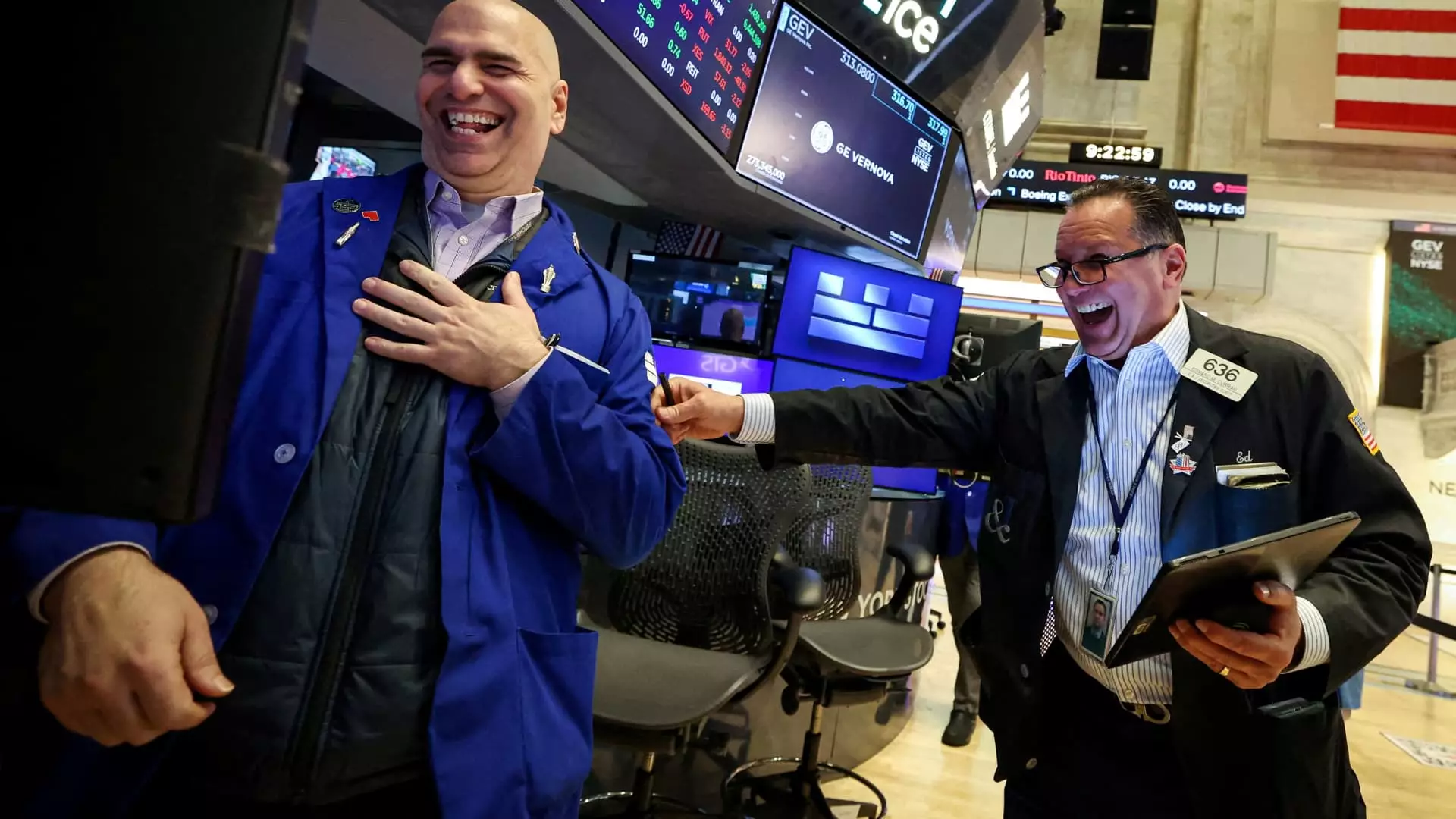In the tangled web of the stock market, short sellers often assume the role of unsung heroes, albeit for nefarious reasons. Their actions, primarily driven by speculation and risk management, can cast long shadows over the market’s trajectory. The intricate dynamics created by these players, especially during pivotal moments in market behavior, unveil a bizarre aspect of trading: the short squeeze phenomenon. It’s a practice that highlights the paradox within the capitalist system—where the pursuit of profit can lead not only to benefactor gains but also to chaotic upward spirals in stock prices.
Recently, short sellers ramped up their bearish wagers on multiple equities following a particularly volatile early April that saw market sentiment twist on President Trump’s tariff announcements. These events set the stage for a precarious balancing act in the financial world, as panic-driven short sellers scrambled to cover their positions when the tide unexpectedly turned against them. This frantic behavior is emblematic of a market response that often lacks inherent logic but is driven instead by emotional volatility and herd behavior.
The Short Squeeze: A Market Paradox
The mechanisms of short selling are deceptively simple: investors bet on the decline of an asset’s price by borrowing shares, selling them, and then repurchasing them at a lower rate for a profit. However, this strategy is not without its inherent dangers. Should the market unexpectedly rally, short sellers are caught in a bind—forced to buy back the now more expensive shares they sold, resulting in a feedback loop pushing prices even higher. This is the essence of a short squeeze, a whirlwind that often bears witness to deeper issues within the market’s structural integrity rather than a reflection of genuine economic growth.
In this context, the present moment offers a vivid illustration of such volatility. With indicators suggesting that a multitude of hedge funds found themselves on the wrong side of the bet, the relief rally that followed needs to be critically examined. It’s misleading to attribute this surge solely to transient comments regarding trade negotiations from influential figures like Trump and Treasury Secretary Scott Bessent. It’s essential to acknowledge that stock prices, inflated directly due to the forced buying of shares by desperate short sellers, don’t reflect the underlying growth metrics we should be assessing as barometers of economic health.
Underlying Sentiment and Market Manipulation
Yet, amid the unquestionable thrill of trading successes, we cannot ignore the implications of such erratic market manipulation. Each swing and rally invites speculation, and the current environment highlights how disconnected pricing can become from fundamental values. Just because a stock soars doesn’t mean it’s thriving; instead, it could just be an illusion created by the frantic buying of short sellers trying to avoid financial ruin.
This observation is exemplified in comments from market analysts like John Flood of Goldman Sachs, who prophesied that the short covering observed may not have the durability of a genuine bullish trend. He suggests that hedge funds are merely reacting rather than investing with conviction, thus revealing a stark illustration of an anxious market move without true investor faith in sustained recovery. The notion that traders remain skeptical and hesitant toward adopting more stable, long-term positions underscores a systemic ailment that necessitates attention.
The Pitfalls of Investor Behavior
The prevailing market atmosphere encourages a cycle of reactive behavior rather than proactive investment strategies. Short squeezes and subsequent rallies can create a false sense of security or optimism, ultimately leading to disillusionment when reality reasserts itself. As one watches the Dow fluctuate—a volatile rollercoaster swinging wildly amidst uncertain political landscapes—it is vital to scrutinize the motives behind market movements carefully.
One of the most potent dangers here is that when the foundations of market momentum are built on shaky ground, the inevitable corrections that follow can be devastating for unsuspecting investors. Those who dive into the fray during euphoric highs may find themselves facing harsh losses when the inevitable downturn follows. This underscores the critical need for a more robust approach to market engagement—one that transcends emotional trading and embraces a reflective, data-informed investment strategy.
All in all, while the current market rally may seem promising, a more nuanced understanding reveals it to be a superficial phenomenon shaped by the urgency of short sellers reacting to unforeseen challenges. Each of these twisted turns in the stock market narrative serves as a cautionary tale, reminding investors that haste often leads to greater loss than gain.

